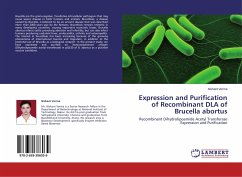Brucella is a genus of Gram-negative, facultative, intracellular bacteria that are highly pathogenic for a variety of mammals, including humans. Recently the WHO cited brucellosis to be the world's most widespread zoonosis. An important feature of the pathogenicity of these organisms is their ability to survive and replicate within the host macrophages. However the mechanism for this is unclear. In addition, none of the classical bacterial virulence factors found in other bacterial pathogens have been found in the genomes of the forty Brucella species and biovars analysed to date. Nevertheless the application of systems biology approaches in recent years has transformed research, permitting fascinating new insights into Brucella molecular biology and genomics. Written by highly acclaimed Brucella scientists, this book comprehensively reviews the most important advances in the field. Opening chapters focus on genetic diversity within Brucella, covering both classical and new species. Particular emphasis is given to how comparative genomics has led to advances in molecular diagnostics, taxonomy and phylogeny. Following chapters cover proteomic analysis, transcriptomic analysis, the VirB type IV secretion system, signalling complexes, e.g. the BvrR/BvrS two-component regulatory system and quorum sensing. These chapters highlight the intricate interplay between factors involved in virulence. Another chapter discusses the role of the Brucellacell envelope in bacterial virulence and evasion of host defences. The final two chapters review the current strategies for the development of novel antibacterial agents and improved vaccines. This volume is essential reading for everyone with an interest in Brucella and brucellosis. It is also recommended reading for the wider body of scientists, veterinarians and MDs with an interest in microbial diagnostics, microbial pathogenesis, host-parasite interactions, cellular microbiologists and immunologists and vaccine development scientists.
Hinweis: Dieser Artikel kann nur an eine deutsche Lieferadresse ausgeliefert werden.
Hinweis: Dieser Artikel kann nur an eine deutsche Lieferadresse ausgeliefert werden.








